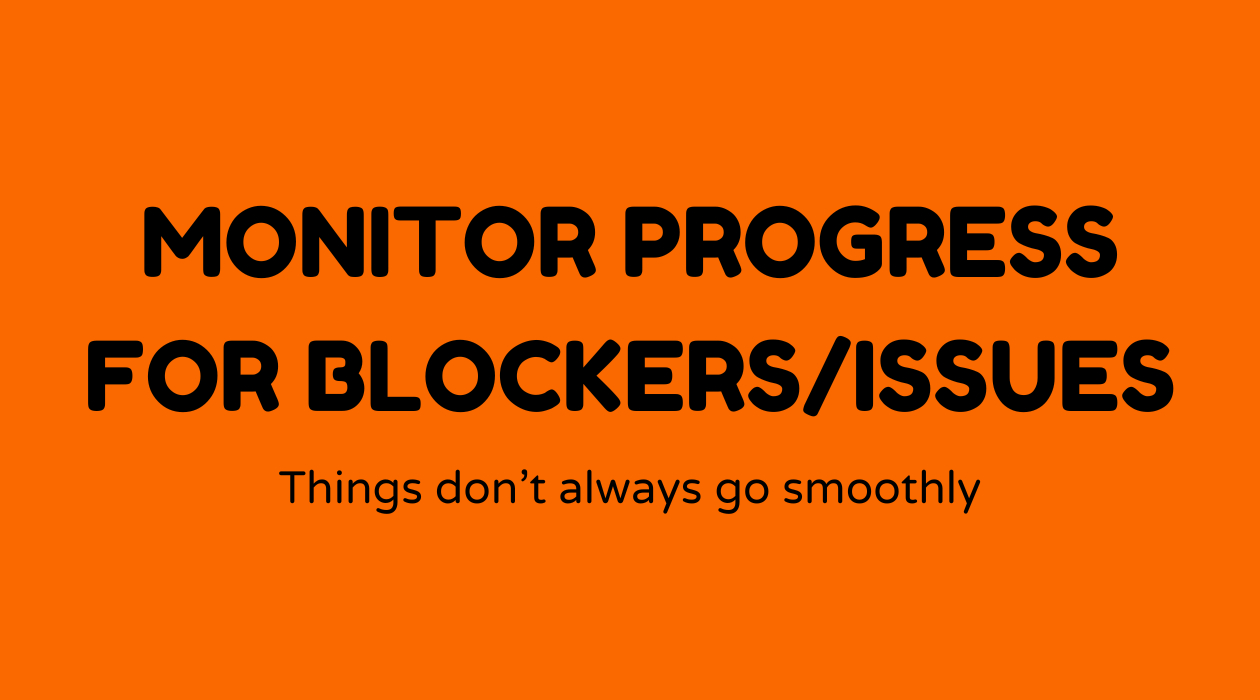Monitor progress for any blockers or issues

Overview of Tracking Progress for Any Obstacles or Issues:
Keeping a watchful eye on project development is just as important as the project itself. Tracking progress entails evaluating whether your project is on schedule and is essential for identifying any possible obstacles or issues. This proactive strategy distinguishes successful teams. So, why is this important?
Effective tracking ensures that deadlines are met, resources are allocated efficiently, and any roadblocks are swiftly addressed. Let’s break down what tracking involves, the methods to execute it, and examine a framework to maintain smooth operations.
Why Tracking Progress Matters:
When you have a demanding project at hand, it’s simple to overlook vital steps or downplay challenges. Tracking progress is like a navigation system in project management—it guides you through obstacles and keeps the project on track. It is important because it:
- Enhances Accountability: Each team member can see how their contribution fits into the overall vision, fostering a sense of responsibility.
- Boosts Efficiency: Detecting issues early prevents them from escalating into larger concerns.
- Facilitates Adaptation: Allows for agile responses to unforeseen challenges, keeping projects viable and relevant.
What is Tracking Progress:
At its essence, tracking progress involves monitoring activities and comparing them to established timelines and budgets. It's not only about identifying delays; it also focuses on uncovering trends, risks, and improvement opportunities.
How Do You Track Progress:
Tracking isn’t merely observing from a distance—it’s an engaging process. Here’s how to implement it effectively:
-
Regular Check-ins: Schedule consistent meetings to discuss progress, challenges, and align on future tasks.
-
Use of Tools: Utilize project management applications like Trello, Asana, or JIRA for visual updates and tracking task completion.
-
KPIs and Metrics: Establish specific key performance indicators and metrics aligned with project objectives.
-
Feedback Loop: Create open communication channels for feedback and immediate reporting of issues.
Examples of Tracking Progress:
-
Progress Reports: Weekly or monthly summaries that highlight activities, achievements, and upcoming tasks.
-
Gantt Charts: Visual planning aids that outline a project's timeline and its associated tasks.
-
Dashboard Analytics: Real-time statistics and visuals providing a comprehensive overview of various aspects of the project.
FAQs:
What are some common obstacles in project progress?
Frequent obstacles include resource constraints, communication gaps, unclear objectives, and technology issues.
How can I effectively communicate issues?
Use straightforward language, provide context, and clearly state impacts. Include visuals or data to support your points.
What tool is best for tracking project progress?
The most suitable tool varies by team size and requirements. Trello works well for visual tracking, while JIRA is ideal for more complex projects with technical needs.
How often should progress be tracked?
This depends on project complexity, but generally, weekly or bi-weekly tracking is recommended for most projects.
What’s the role of leadership in tracking progress?
Leadership should create a supportive environment, allowing any issues to be openly discussed and resolved efficiently.
How do I address recurring obstacles?
Identify underlying causes, adapt strategic plans, and apply lessons learned to avoid future occurrences.



